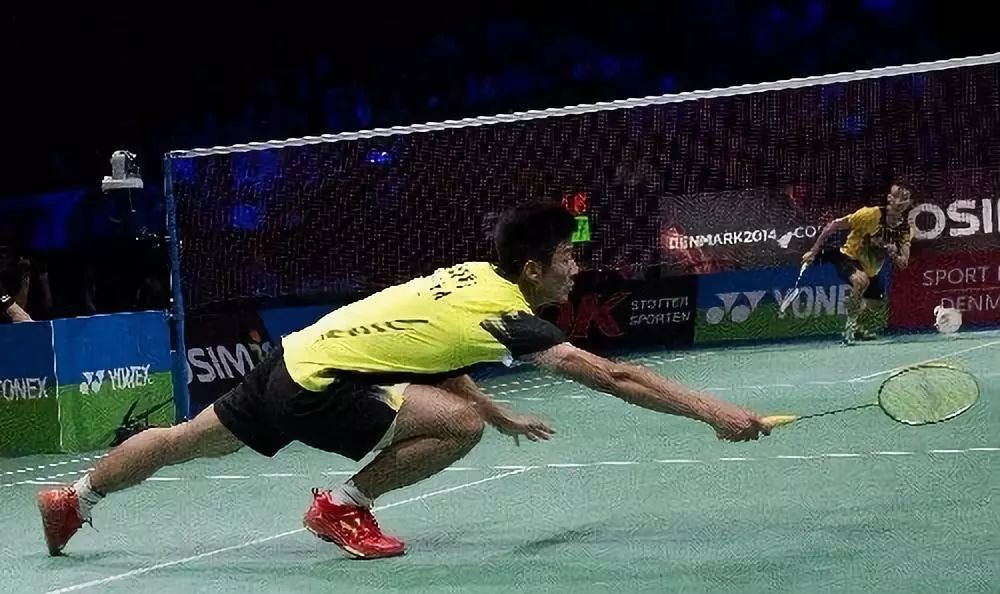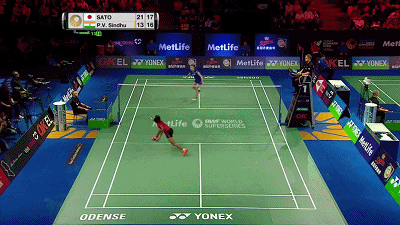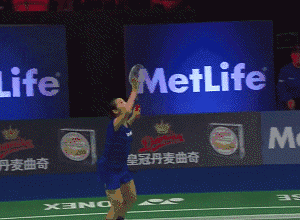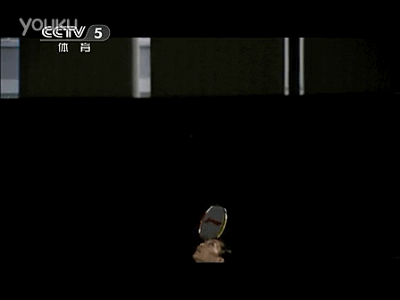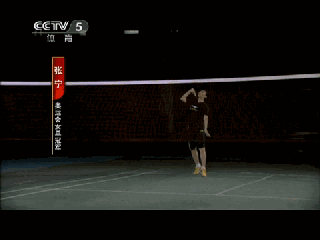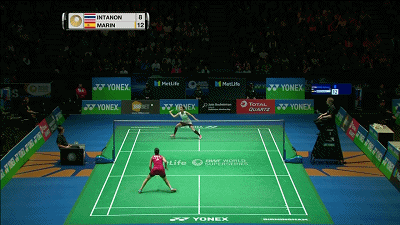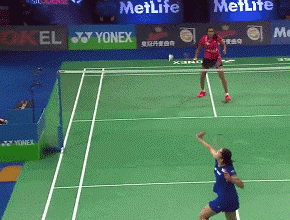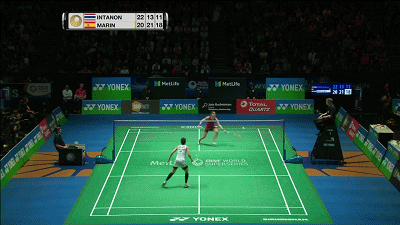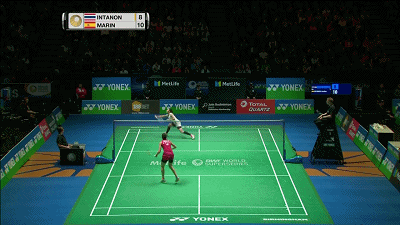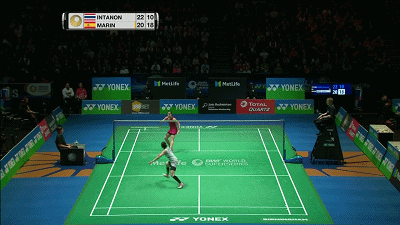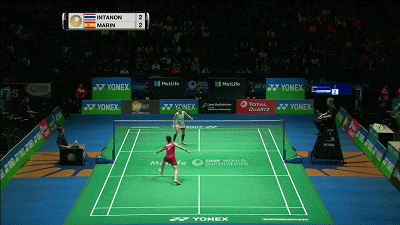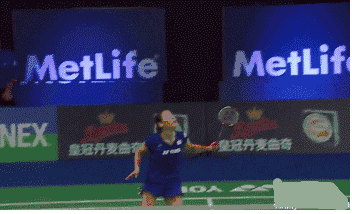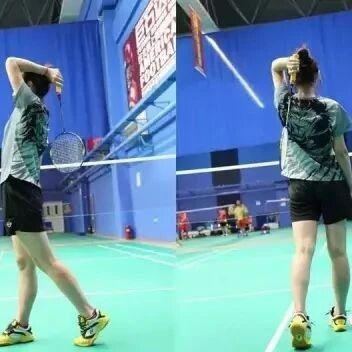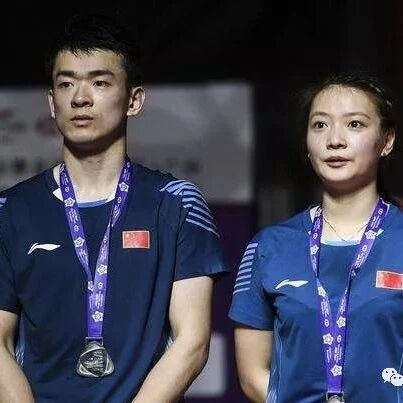
When playing badminton regularly, we always emphasize hitting the shuttlecock "straight," as this optimizes both the transfer of power and the control of its direction. However, there’s a special technique that deliberately requires hitting the shuttlecock slightly "off-target"—and it’s precisely this approach that allows players to deliver more dangerous shots. This technique is known as the cross-court smash.
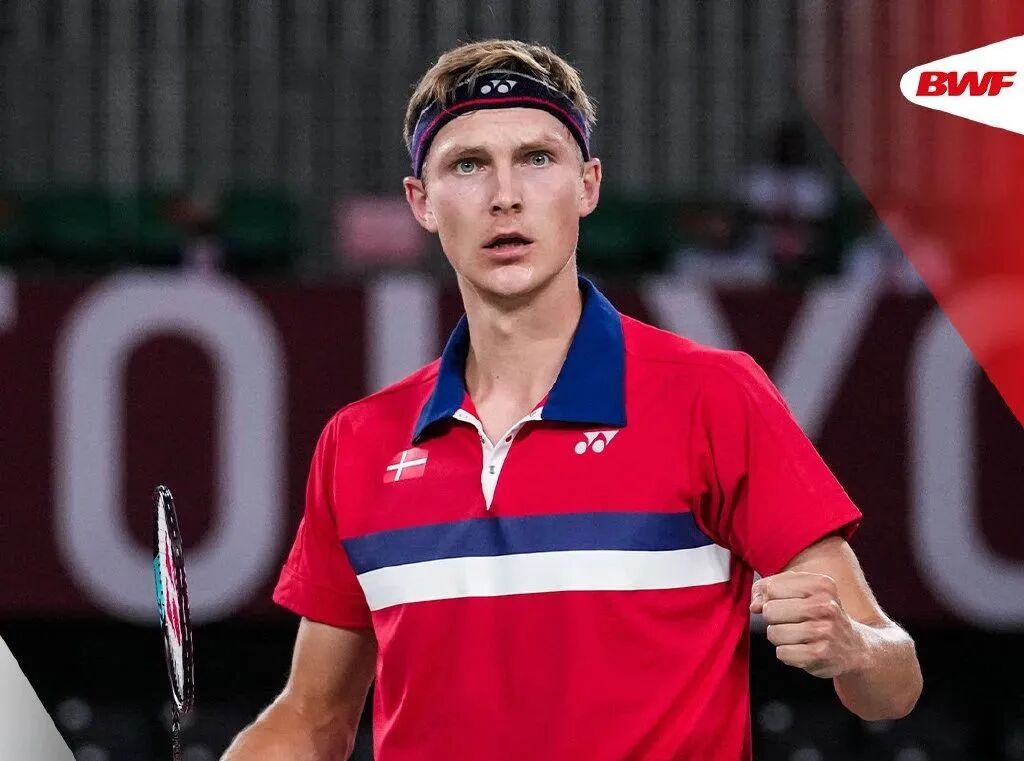
"The character 'pi' perfectly captures the essence of this technique—when striking the ball, you use your wrist to wrap and gently brush (or rub) the side of the clubhead in a clockwise motion, commonly referred to as hitting a 'ci.'"Pay attention to the side of the friction ball head.
There are two ways to execute a forehand cross-court shot: the drive cross-court and the drop cross-court.
The difference between the two
① Racket Face: When performing a smash, the racket face should make minimal contact with the shuttlecock’s head—aiming instead to strike it squarely on the side. In contrast, during a drop shot, the racket face should maximize friction with the shuttlecock’s head.
② Ball Speed: A smash is faster than a drop shot—smashes emphasize speed, while drop shots focus on precision of placement.
③ Flight trajectory: A smash has a long flight distance and lands far from the net; in contrast, a drop shot falls immediately after clearing the net, landing within the forecourt line—close to the net.
④ Nature: The cross-court drop shot is used to disrupt your opponent, while the cross-court smash is aimed at attacking them.
⑤ Power Application: Naturally, you need to apply more force when performing a smash compared to a drop shot. When executing a drop shot, if the hitting point is relatively low, slightly increase your power—because as the shuttlecock flies forward, it also starts descending. If it slows down too much while moving forward, it will drop too quickly, making it easy for the shuttlecock to fall short of the net.
① The backcourt forehand chop motion is similar to the swing used for a high, deep shot. Note that at this point, you should face sideways toward the net and initiate the swing with your body turned—this helps make the movement more deceptive.
② Aim for a high hitting point—if the hitting point is too low, you’ll end up with a powerful, slicing-type attack.
③ When swinging the racket, perform a clockwise motion—this way, you’ll reach the side of the hitting point, making it easier to strike the ball.
④ When executing a cross-court drop shot, the goal is to reduce the ball's flight distance without sacrificing the racket's hitting speed. This is achieved by making a clean, angled contact between the racket face and the shuttlecock—specifically, a "cutting" motion—that transfers minimal impulse from the racket to the ball. To ensure the ball drops sharply and unpredictably, maintain sufficient racket speed while increasing friction between the racket face and the shuttlecock. If these conditions aren’t met, the shot loses its suddenness, and the ball will simply fall more gradually. Ultimately, the landing point should be within the area between the service line at the net and the net tape itself.
⑤ When executing a diagonal smash, apply slightly less friction and more downward pressure—similar to a straight smash—but position the racket head sideways as well. This ensures the shuttlecock flies diagonally into the open space on the opposite court.
① Hitting from the backcourt on the forehand side allows you to combine flat, high, drop, and smash shots, making it difficult for your opponent to anticipate effectively and increasing the challenge of their judgment!Making it difficult for opponents to make a judgmentThe movements are incredibly confusing.
②When the opponent is primarily defending the straight-line positions, a clear-cut smash or a drop shot becomes more subtle and can also catch them off guard. When the hitting point is in the backcourt near the baseline, a drop shot is particularly effective at disrupting the opponent’s positioning. In contrast, if you opt for a smash at this moment, the shot’s impact tends to be weaker, as the long distance causes the shuttlecock to lose speed by the time it reaches the net.
③ When the hitting point is in the mid-to-back court, a cross-court smash is more likely to catch the opponent off guard—and it’s also delivered with remarkable speed.The angles are tricky, and the speed is incredibly fast.
④ You can execute the smash not only near the forehand sideline but also close to the center line—just be mindful of controlling the angle and trajectory when hitting it, as an overly sharp angle could easily send the ball out of bounds.
① The most challenging aspect of the drop shot is ensuring the shuttlecock flies swiftly yet lands close to the net—without clearing it too high, which could easily lead to a block, or dropping it too low, risking a net fault. As such, mastering the drop shot requires exceptional feel and finesse, with players needing to refine their control over the shuttlecock’s trajectory, pinpoint the optimal hitting point at its highest arc, and carefully adjust the force applied—all through consistent, repeated practice.Something like this is too tall.
② The difficulty of the chop shot lies in whether it’s easy to hit it out of bounds. Since the chop shot has a relatively long landing point, improper racket face control can easily cause the ball to sail wide—after all, the extended trajectory during the chop is longer than usual, making it more prone to going out of play.
Hitting the shuttle too hard downward can easily lead to netting, while hitting it too lightly may cause it to go out of bounds. Properly controlling the angle is the key to a successful chop smash!A smash hit too close to the center line requires careful angle control—otherwise, it’s easy to go out of bounds.
③ After executing the smash, you must be able to follow up quickly—especially if your opponent receives the ball and chooses to return it short to the net. In such cases, the smasher should move swiftly toward the net; however, if you lack the ability to reach the net promptly, it’s best to use this shot cautiously.Learning the diagonal smash adds another option for returning shots in the backcourt forehand area—truly a case of "more tools never hurt!" It lays the groundwork for diversified, multi-point offensive opportunities in the backcourt!
The drop shot is primarily used to move the opponent around, disrupt their rhythm, and create better opportunities for an attack, while the smash serves as a direct offensive weapon.
Diagonal Split Lift
By striking the ball with a sharp, angled contact using the forehand racket face, the ball suddenly changes direction as it clears the net, landing precisely in the area between the opponent's net and service line—creating either a difficult return or leaving them too late to react.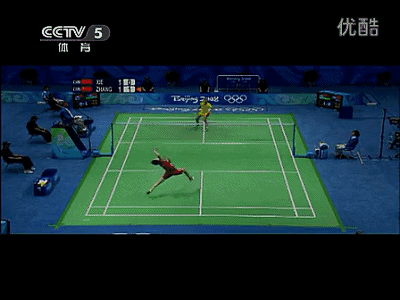
Forehand cross-court drop shot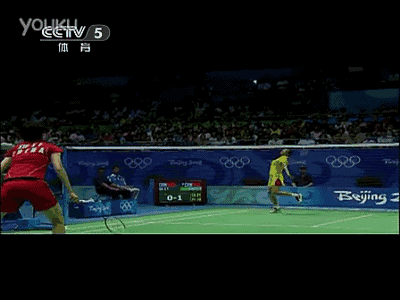
Pay attention—just as the ball is struck, its trajectory suddenly changes noticeably.
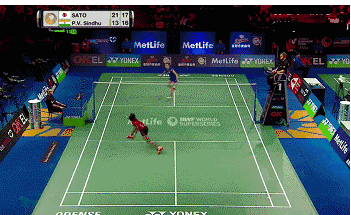
Like a deceptive drop shot move.
The overall swing motion uses the body's sway to disguise the actual hitting action, allowing for a precise drop shot.
Diagonal Slash
The "pilu" stroke, which includes the character for "kill," inherently carries an aggressive intent. Therefore, when executing a pilu, in addition to making a cutting motion, you should also apply more downward pressure—similar to how you'd execute a kill shot. Moreover, the landing point of a pilu should be farther into the opponent's service area compared to a piliao.
Quick, forceful chop with a downward ball strike.Pay attention to the racket face at the moment of impact.
The difference between the two
Similarities: Whether it’s a drop shot or a smash, the final swing and contact with the shuttlecock should involve using your wrist to sweep—specifically, brushing (or rubbing)—the side of the shuttlecock head in a clockwise motion, rather than hitting it directly with the flat face. If you’re unsure, try mimicking the motion with your hand: if you want the shuttlecock to land on the forehand diagonal, wouldn’t that require an outward rotation?
Difference: The drop shot requires the ball to land closer to the net, primarily to disrupt your opponent’s positioning, while applying minimal downward pressure. It’s typically used near the baseline to create the illusion of a high, deep shot, forcing your opponent into a defensive position and setting up your own offensive play.The smash is similar to a kill shot—it’s an offensive stroke. It requires significant downward pressure and is ideal when the incoming ball is at mid-court, near the forehand sideline.
The challenges of both
1. Because these are diagonal shots with a longer ball trajectory, both techniques are prone to going out of bounds—making precise control of power and angle absolutely critical.2. When executing a drop shot, since the ball travels slowly, if the height over the net is too high, it’s easy to be blocked; but if you apply too much downward pressure, the ball may easily catch on the net. It all comes down to controlling your (power) and angle effectively.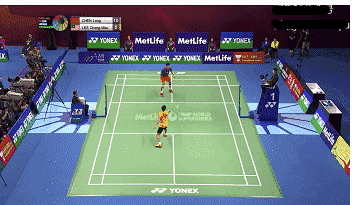
Too tall, making it easy for the opponent to block.
To overcome these challenges and master the techniques of drop shots and smashes, consistent practice is key. Many amateur badminton enthusiasts struggle with smashes—or simply lack confidence in executing them effectively—making it difficult to launch a powerful, decisive attack during matches. As a result, scoring becomes more challenging. However, once you perfect diagonal drop shots and smashes, your offensive capabilities will significantly improve, making it far easier to rack up points on the court.
More article recommendations:
Having trouble with slow start-up speed in badminton? Try shifting your center of gravity—it’ll make an immediate and amazing difference.
What should you do if your backward speed is too slow? Learn the backpedaling technique from Lee Chong Wei!
How to become the net-raking, intimidating force in badminton doubles that sends shivers down everyone's spine?
Zhao Jianhua, Yang Yang, and Li Mao have prepared over 100 lessons for everyone, covering techniques like badminton net play, backhand cross-court hooks, and smashes. Click "Read the Original Article in the Bottom Left Corner" to check them out! If you're looking to improve your badminton skills, don't miss this opportunity—definitely worth it!

Click here to access 100 lessons.



